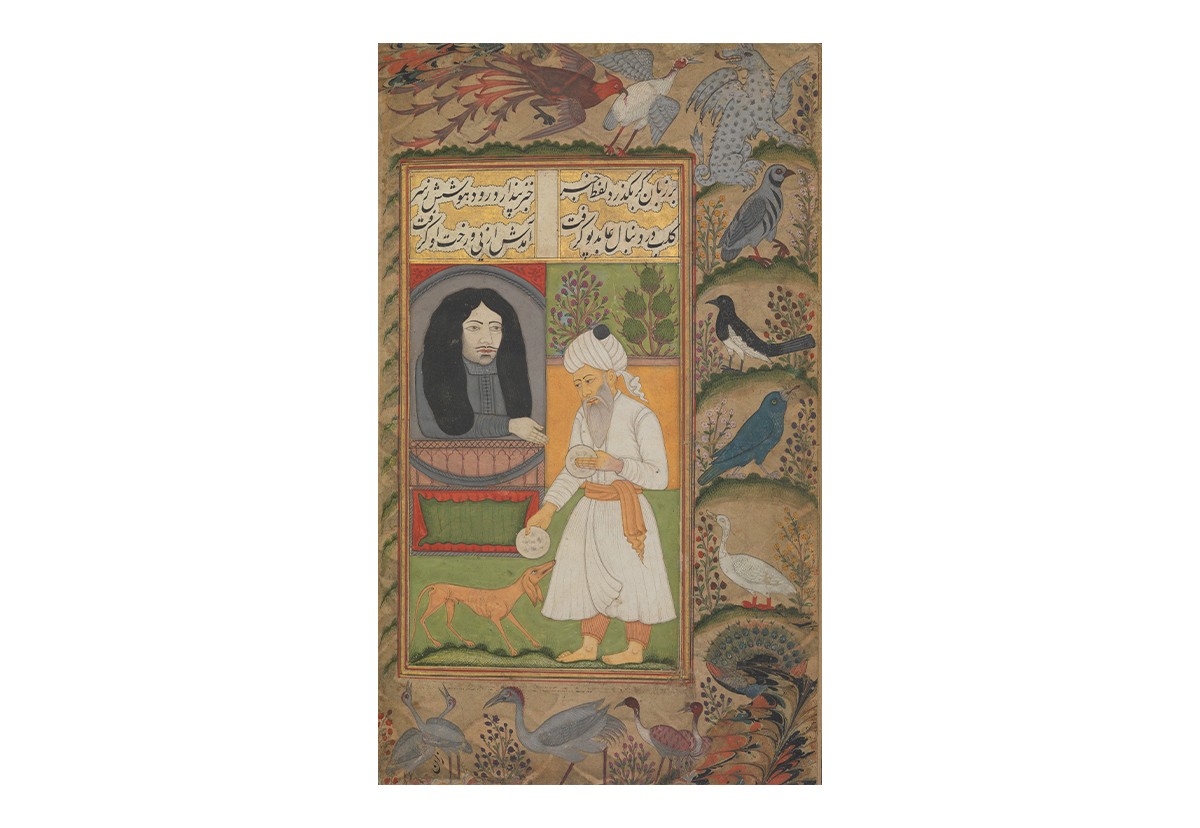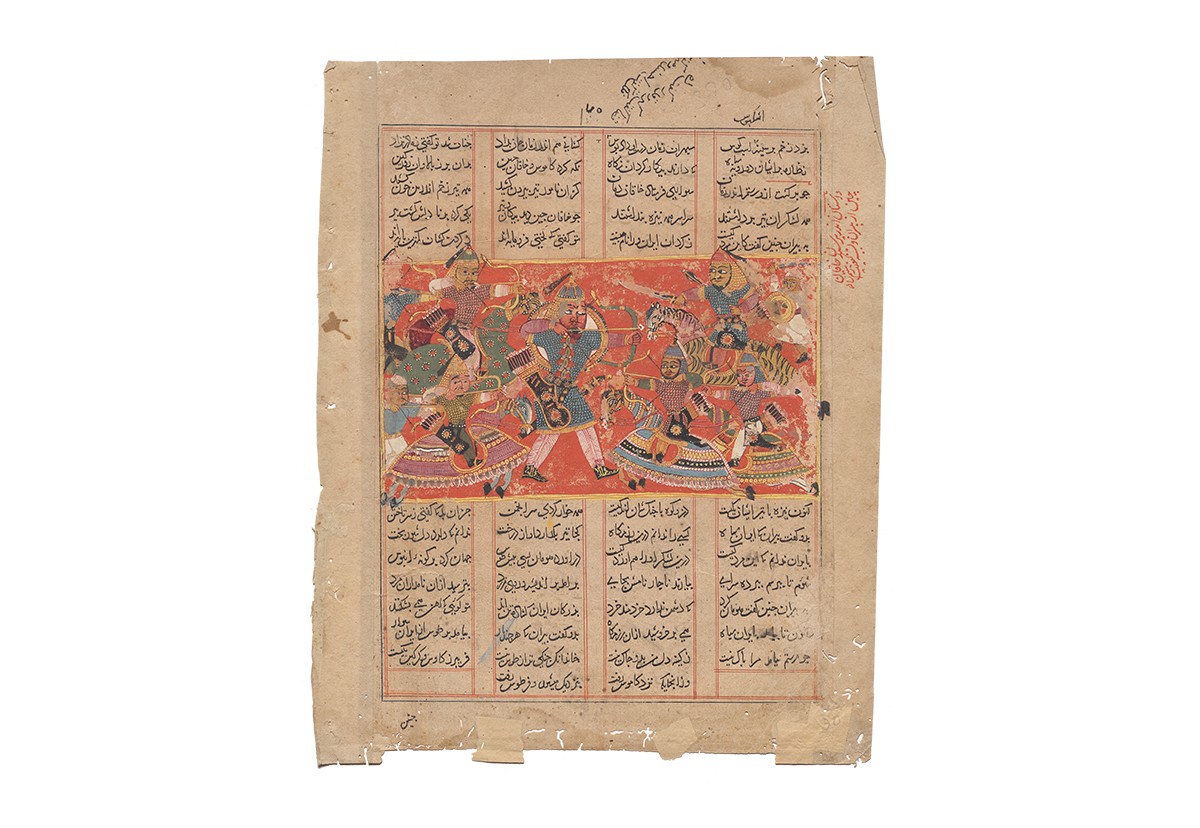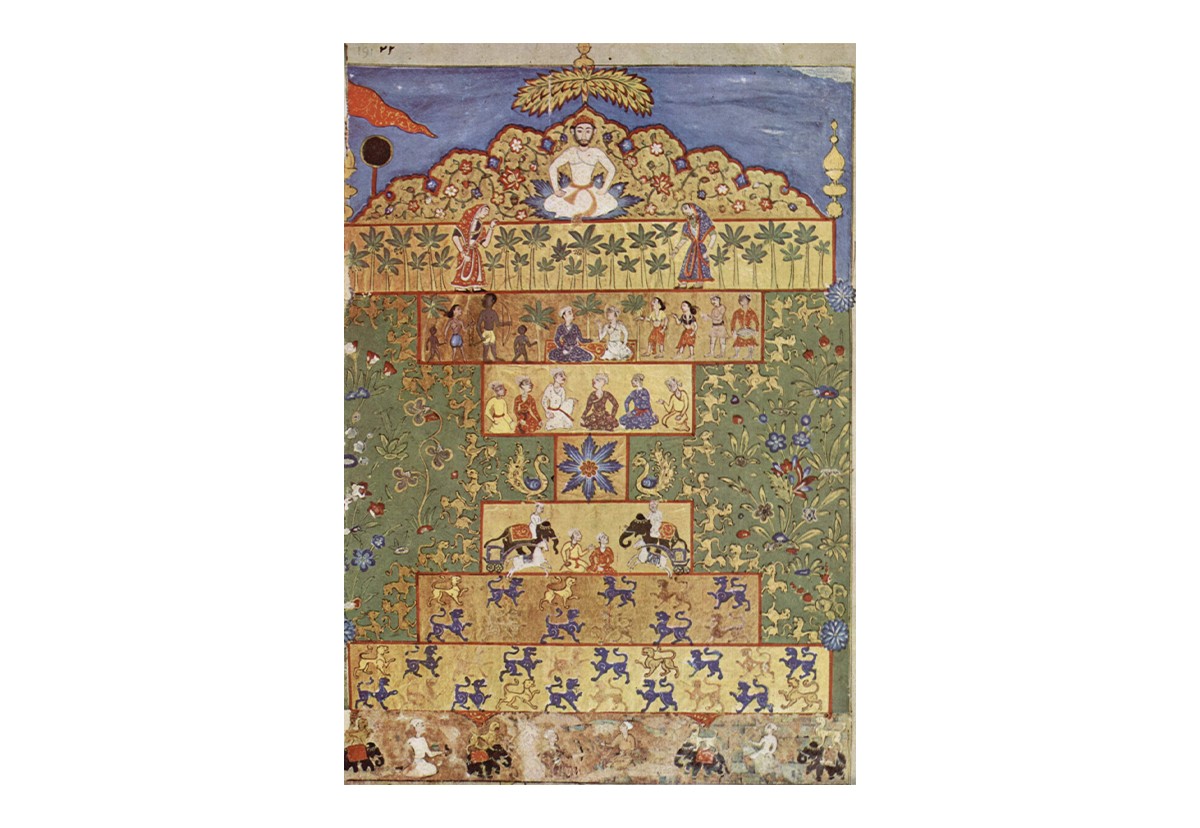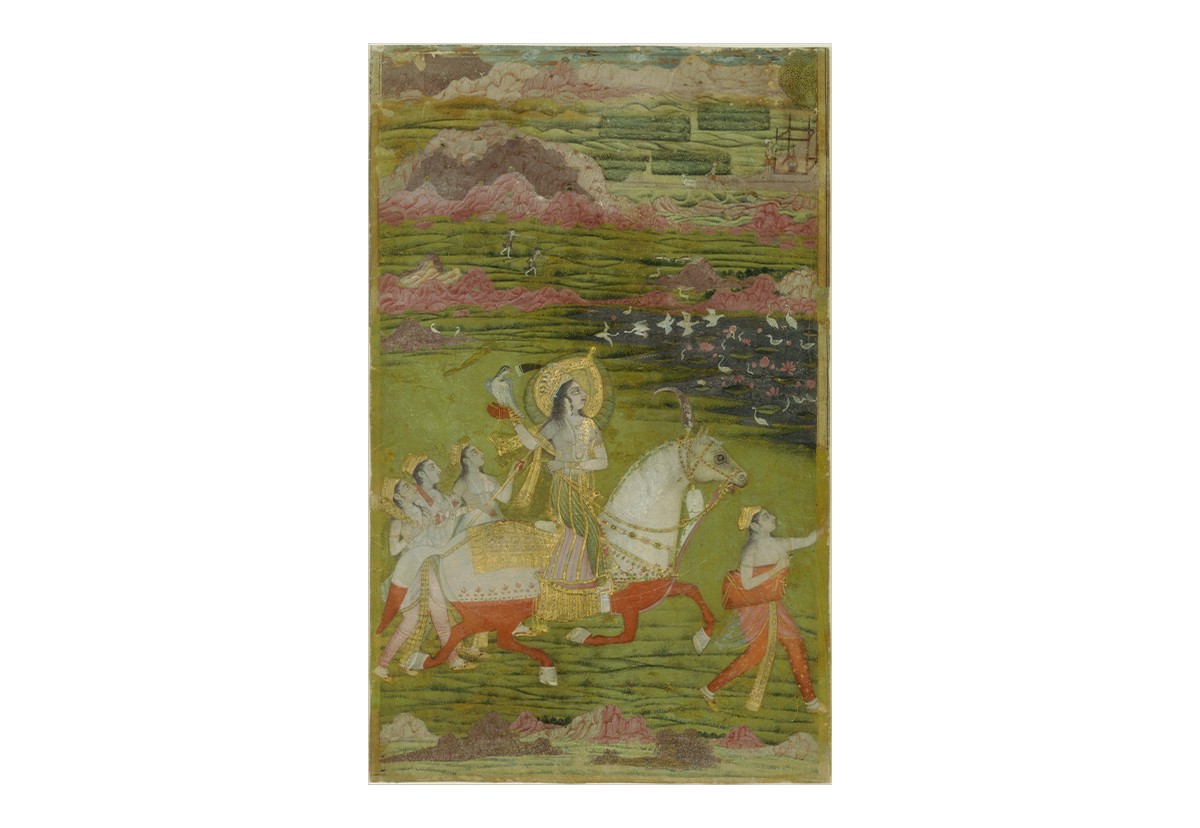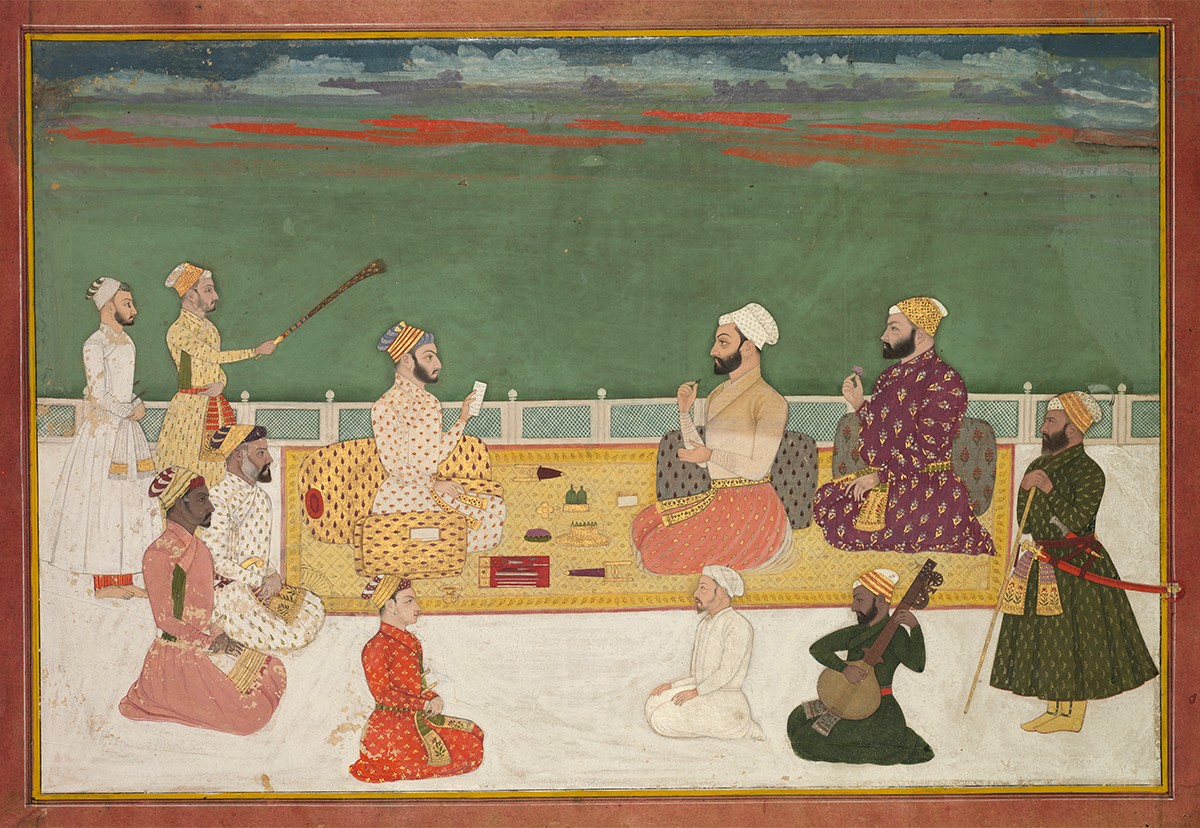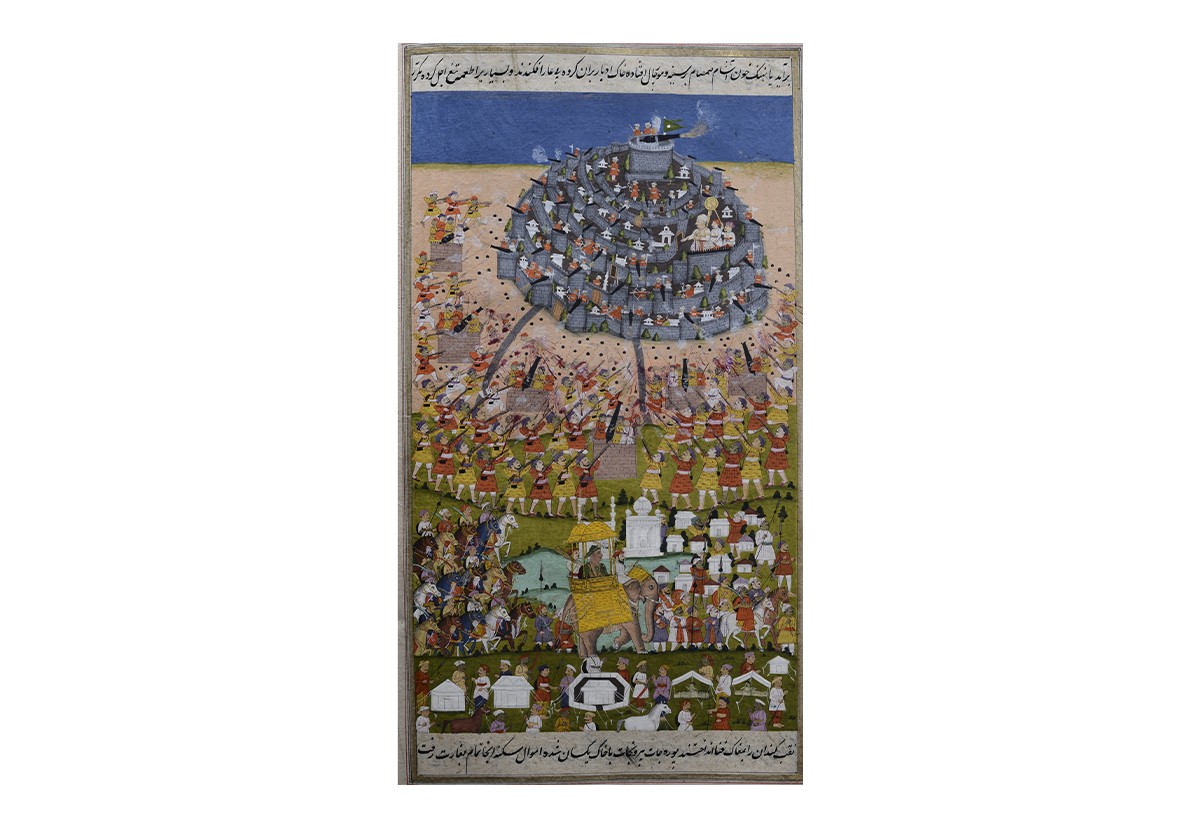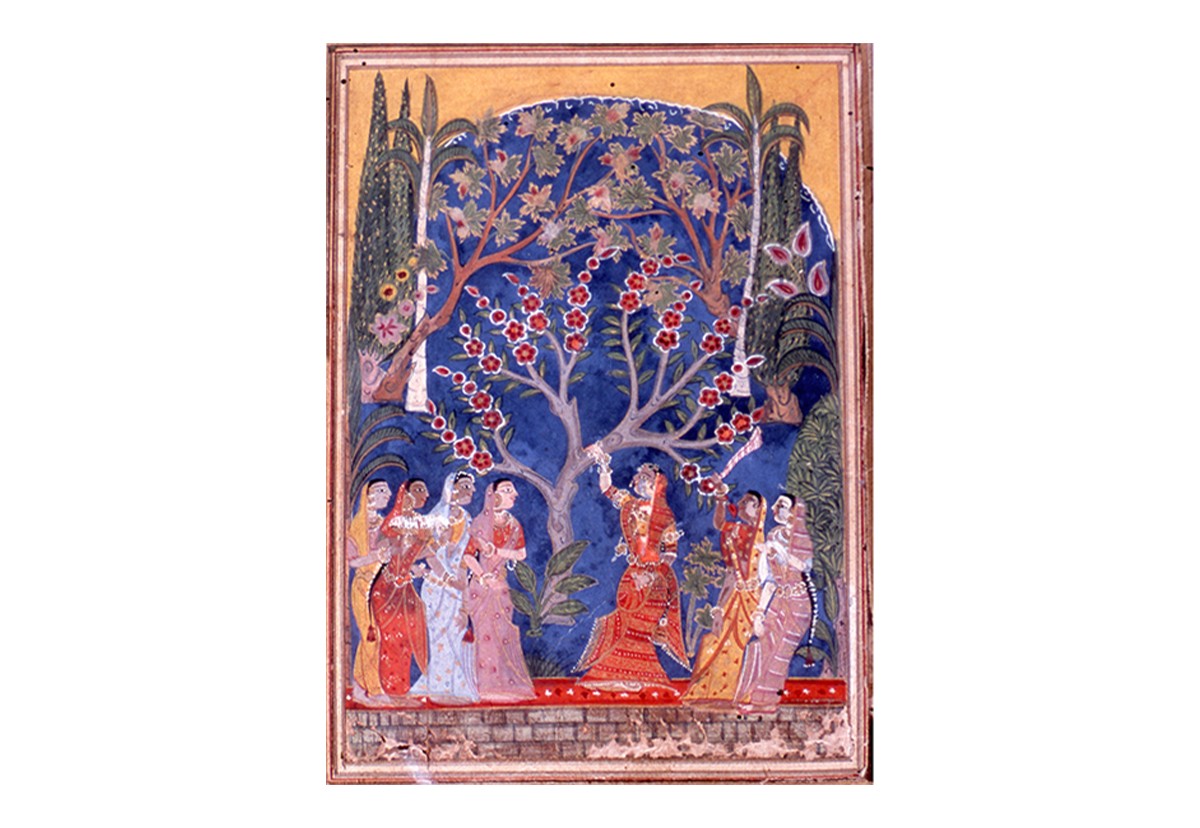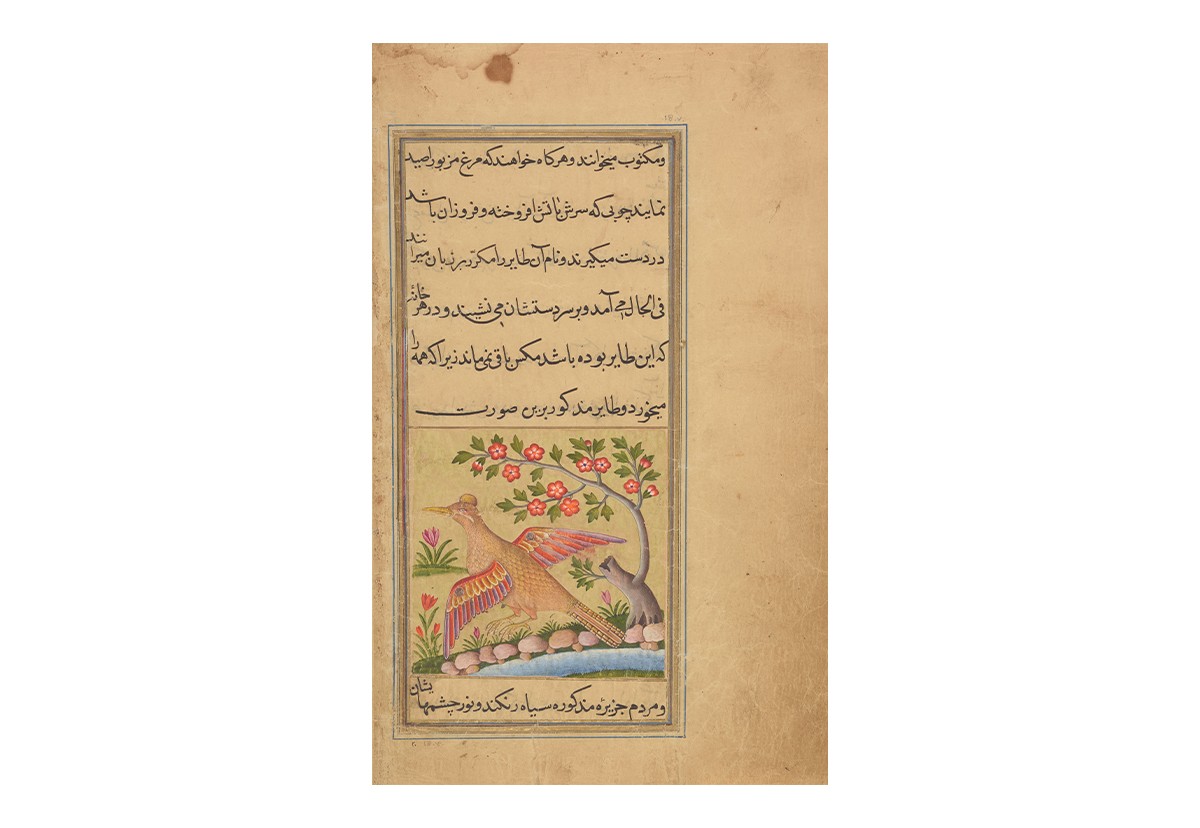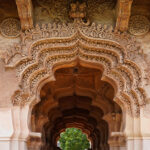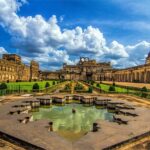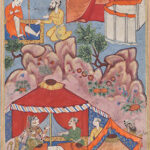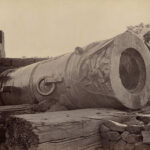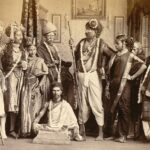Manuscript Painting Flourishes in the Deccan
1565–1680
The fall of the Vijayanagara empire marks the start of a cultural efflorescence in the Deccani sultanates. Ahmadnagar, Bijapur and Golconda each become important centres of manuscript illustration and painting. Of these, Ahmadnagar’s legacy, seen in manuscripts like the Tarif-i-Husain Shahi, is the shortest, as it falls under Mughal control by 1600. In Bijapur, the early years of court-patronised painting are dominated by a heavily romantic and mystical visual language, reaching an apogee in the reign of Ibrahim Adil Shah II, when distinct styles of anonymous artists are also discernible.
Sustained forays of the Mughal empire into the Deccan in the early 1600s and again in the 1680s end cultural activity in some regions, whilst leading to a much more pronounced Mughal style (in the case of painting) in others. Close affiliations between the Persian and Turkish courts, both politically and via the trade across the Persian Gulf, have a greater influence on Deccan painting than the Mughal style, at least until Aurangzeb’s invasion. This not only affects the appearance of Deccan manuscript paintings, but also the subject matter, which includes composite creatures and astrological charts.
Bibliography
Kossak, Steven. Indian Court Painting: 16th–19th Century. New York: The Metropolitan Museum of Art, 1997.
Michell, George, and Mark Zebrowski. Architecture and Art of the Deccan Sultanates. Cambridge, UK: Cambridge University Press, 1999.
Welch, Stuart Cary. India: Art and Culture 1300–1900. New York: Holt, Rinehart and Winston, 1985.
Feedback 
This entry appears in
Art in South Asia
Visit Timeline
Associated Timeline Events
First Published: March 11, 2024
Last Updated: August 5, 2024



